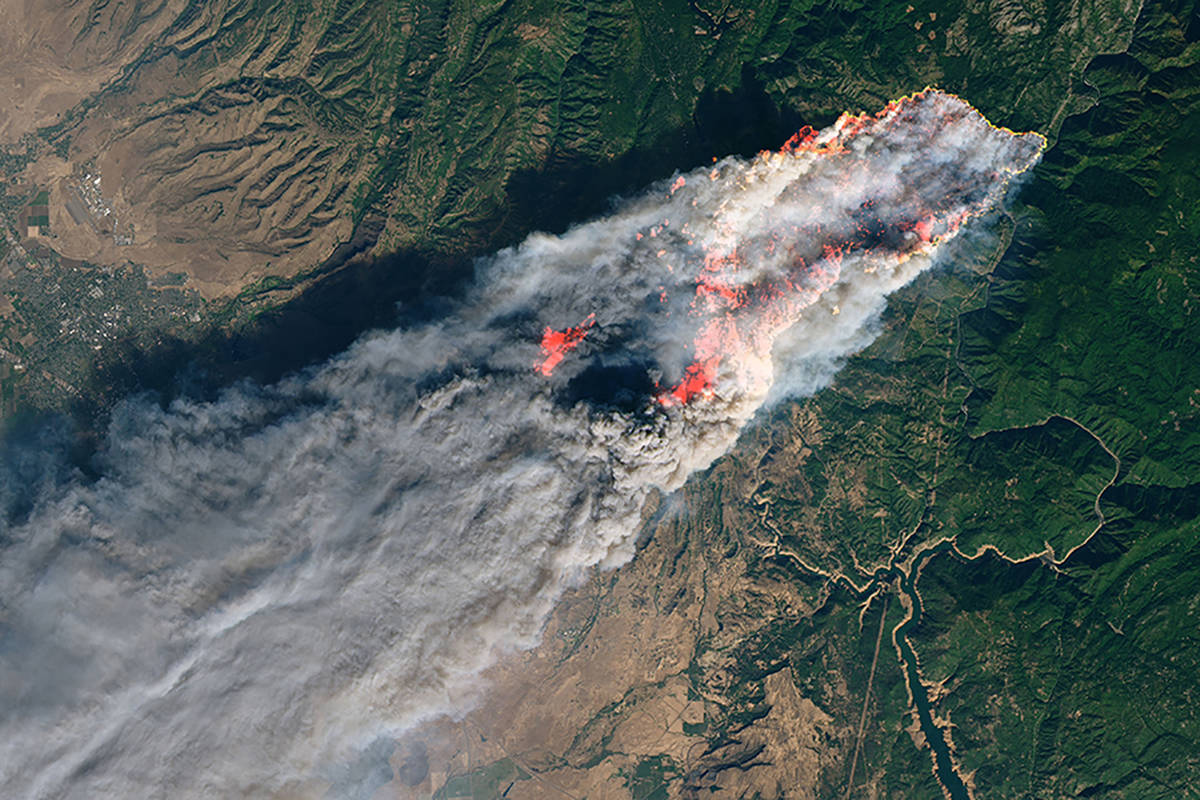Camp Fire of 2018 leads to new wildfire research
Moved by the tragedy of the 2018 Camp Fire, a team of engineers and scientists are coming together in a new five-year project to develop a comprehensive computational, live digital platform to predict and monitor wildfire risk that can be used by wildfire managers, emergency responders and utility companies to plan for, respond to and remediate wildfires.
With a background and expertise in computational modeling in civil engineering, Hamed Ebrahimian of the University of Nevada, Reno College of Engineering began pursuing a better way to understand fire risk. He assembled a multi-institutional group of researchers with a similar desire to use science and technology to reduce the chances that the world would suffer from another wildfire of the Camp Fire magnitude.
With a five-year, $2 million grant from the National Science Foundation’s LEAP-HI program, the research project envisions an eventual digital platform that evolves with new data and dynamically updates the long-term (seasons/months ahead) to short-term (weeks/days ahead) pre-ignition fire risks at regional and community scales for risk management, and the post-ignition fire behavior at near real-time (hours-days) for situational awareness.
“This is an interdisciplinary intervention with a diverse team to blend different thinking modalities and to build a digital platform that can be used to monitor the risk of wildfire on a spectrum of spatial resolution and time,” Ebrahimian said. “Once developed, the computational platform will increase the efficiency of the wildfire management process by providing timely actionable information to decision-makers.”
The team of researchers assembled by Ebrahimian includes Adam Watts, associate research professor in fire ecology at the Desert Research Institute; Branko Kosovic, director of the Weather Systems and Assessment Program at the Research Applications Laboratory of the National Center for Atmospheric Research; Negar Elhami-Khorasani, assistant professor in the department of civil, structural and environmental engineering at the University at Buffalo; Ertugrul Taciroglu, professor and chair of the civil and environmental engineering department at the UCLA Samueli School of Engineering; Amir Talaei-Khoei, associate professor in the UNR College of Business; and Neil Lareau, assistant professor in the atmospheric sciences program of the department of physics.
The project will involve eight graduate students and one post-doctoral scholar. A new joint educational curriculum between the civil engineering and physics departments at UNR is planned to train the future workforce in wildfire engineering. The project includes an educational outreach program that will target local schools through K-12 outreach programs.
“This project exemplifies the engineering spirit,” UNR College of Engineering Dean Manos Maragakis said. “Through collaboration, it provides multiple lenses for understanding a pressing problem not only in the United States but around the world. It advances our common goal of protecting lives and increasing prosperity. Because it integrates essential educational components, it further ensures that the next generation will build on its successes.
“We are proud of Hamed and his exceptional collaborators, and we are grateful for their contributions to our global community.”

















